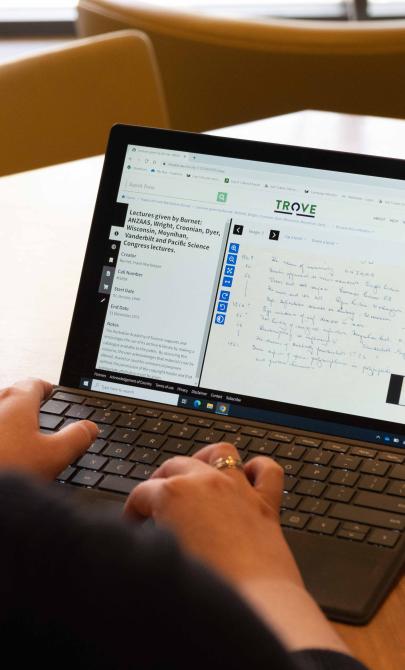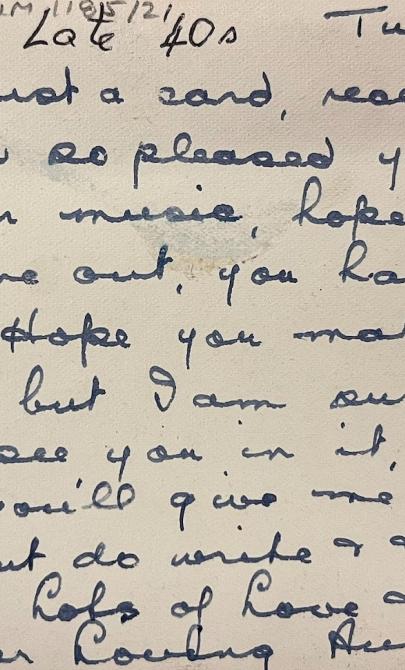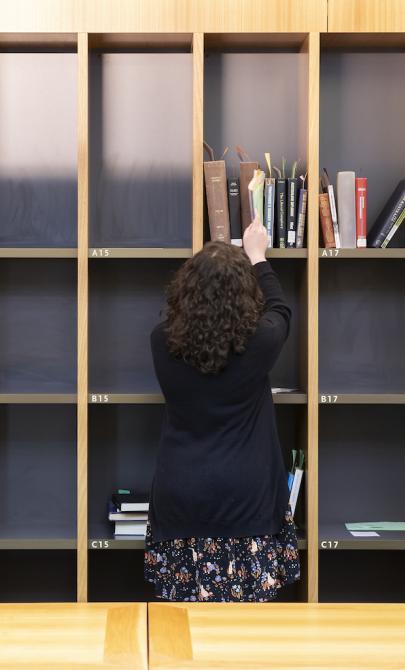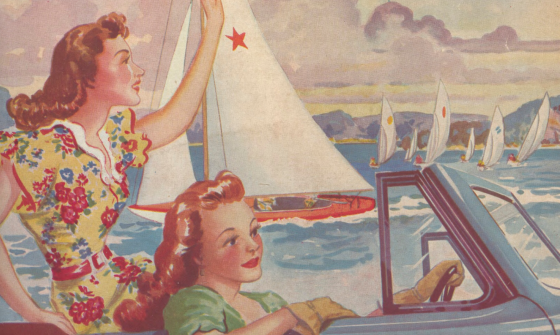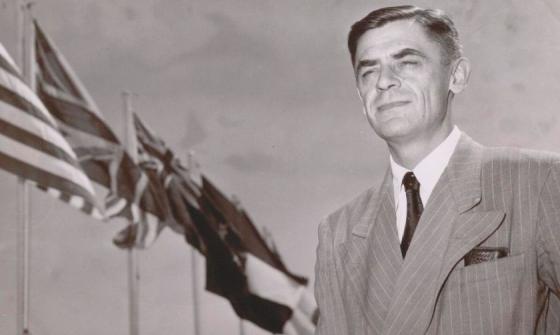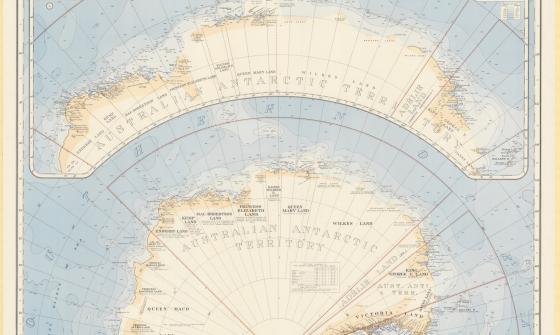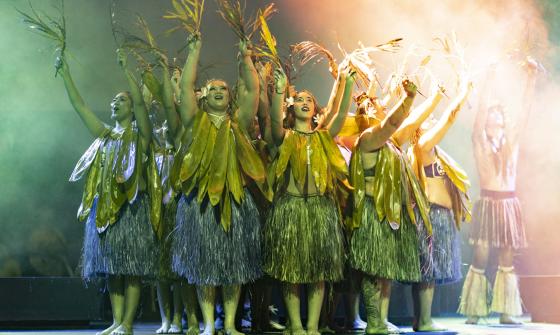Chinnery Collection
Key items in the collection
Highlights from this collection demonstrate its historical significance and variety.
The Chinnery Collection contains 142 printed and manuscript maps dating from 1886 to 1953, the majority of which are of Papua and the Mandated Territory of New Guinea. The collection is particularly strong in patrol maps, including those from Chinnery’s patrols in the Mambare and Kumusi divisions of Papua in 1915–16. It also includes several maps of patrols in New Guinea from 1926 to 1935.
Other items include maps of German New Guinea, geological maps by Evan Stanley (1912–22), maps showing the distribution of objects, native crops and customs, district and language boundaries, and photomaps of Papua, New Guinea, New Britain and the Solomon Islands (1942).
EWP Chinnery photographs
The Library holds 1,850 photographs by EWP Chinnery, all relating to his work in Papua New Guinea. They document his patrols in the Kumusi, Mambare and Delta divisions in Papua (1910–17), the Mount Obree expedition (1913), the Mount Yule expedition (1917), copper mining in Papua (1921–24), and visits to:
- the Sepik district (1925)
- Bougainville (1925–30)
- New Britain (1925–26)
- the Morobe district (1927)
- New Ireland (1929).
Photographs from the Mount Hagen patrol (1933–38) are also included.
In addition to portraits of individuals, families and groups, the collection features images of government stations, missions, villages, houses, bridges, standing stones, gardens, canoes and outriggers, fishing, fire making, cloth weaving, dances, initiation and burial ceremonies, headdresses, children’s games, river scenes, Mount Lamington, the Kokoda Track and patrols.
Sarah Chinnery photographs
Sarah Chinnery’s photographs are more varied in subject matter and include many fine examples of pictorialism. The collection comprises 329 prints and 1,489 negatives.
Her earliest photographs—taken before World War I—depict English country scenes and people. Her Papua New Guinea work includes images of airfields, villages, houses, house posts, canoes and outriggers, markets, dances, trees and flowers. She also photographed Rabaul Harbour, visits to Wau and Salamaua (1933), the Sepik (1935), and the Rabaul volcanic eruption (1937). Many portraits depict villagers, servants and other Indigenous people.
The collection also includes a series of portraits of notable anthropologists, such as Gregory Bateson, Raymond Firth, AC Haddon, AR Radcliffe-Brown, WHR Rivers, G Elliott Smith and FE Williams. Other subjects include portraits of the Chinnery children, artists and writers at Montsalvat, Melbourne streetscapes, landscapes, and still life compositions featuring flowers.
The papers of EWP Chinnery are extensive. They date from 1897 to 1971 and include his letters to family, general correspondence, diaries, notebooks, job applications, official reports and memoranda, patrol reports, research notes, statistical data, translations, addresses, lectures, conference papers, press releases, newspaper cuttings, publications, drawings and photographs. The papers cover all phases of his career, from his arrival in Papua in 1906 to his work with the United Nations and the South Pacific Commission after the Second World War. His work in the Northern Territory from 1939 to 1946 is especially well documented.
The New Guinea papers include material on native rights, labour, education, languages and depopulation. The anthropological papers cover topics such as religion, Duk Duk and initiation rites, sorcery, land tenure, kinship and related subjects. Notable correspondents include anthropologists Gregory Bateson, Hermann Detzner, A C Haddon and Margaret Mead.
There are 14 diaries written by Sarah Chinnery in New Guinea during 1921–22, 1928–29 and 1932–37. Although the entries are intermittent, they are detailed and provide a rich account of her first impressions of the country and its people, her homes and gardens in Port Moresby and Rabaul, and the social life of Australian officials and their families in the Mandated Territory before the Second World War. The diaries include a detailed description of an expedition to the Sepik River in 1935 and a vivid account of the 1937 volcanic eruptions that destroyed Rabaul and caused many deaths. The diaries have been transcribed.
Sarah Chinnery hoped to write a book about her home and garden on Malaguna Road in Rabaul, and she wrote several short narratives based on her diaries. Although the book was never completed, the manuscript and typescript narratives are held in the collection. Selections from the diaries and narratives were published by the National Library in Malaguna Road (1998).
About Ernest Chinnery
Ernest William Pearson Chinnery (1887–1972) was born in Waterloo, Victoria, and educated at state schools. He joined the Papua public service in 1909 as a clerk and became a patrol officer the following year. He worked in the Kumusi and central divisions, and during his patrols he discovered the source of the Waria River.
Military service and academic study
In 1917, Chinnery joined the Australian Flying Corps. After being demobilised in England in 1919, he studied under anthropologist A.C. Haddon at Cambridge University. He had already published anthropological papers and had lectured to the Royal Geographical Society.
Work in New Guinea and the Northern Territory
Chinnery returned to New Guinea in 1921 as labour adviser to New Guinea Copper Mines Ltd. In 1924, he became government anthropologist for the Mandated Territory of New Guinea. He was appointed Director of District Services and Native Affairs in 1932 and extended government control into the central highland valleys from his base in Rabaul.
In 1938, he was seconded to lead a new Department of Native Affairs in the Northern Territory, a position he held until 1946.
Later life
Chinnery hoped to return to Papua New Guinea as an anthropologist, but received no support. He served as an Australian adviser at the United Nations Trusteeship Council in 1947 and took part in two UN missions to Africa. He later retired in Melbourne.
About Sarah Chinnery
Early life and interest in photography
Sarah Johnston Chinnery (1887–1970), née Neill, was born in Belfast, Northern Ireland. In 1900, she moved to Aylesbury, Buckinghamshire, to keep house for her brothers. One of them gave her a camera, and she became a keen and skilled photographer. She joined three camera clubs and used a motorbike to travel and photograph landscapes and interiors in different lighting conditions.
Professional life and marriage
Sarah trained as a dentist and took over her brother’s dental practice in Aylesbury. She married Pearson Chinnery in 1919 and moved to Australia with him in 1920. She brought with her a Sinclair Una quarter-plate camera and a Thornton Pickard horizontal enlarger, which she continued to use throughout her life.
Life in New Guinea
Sarah began keeping a diary in Port Moresby in 1921 and continued writing intermittently until the end of 1937, when she left Rabaul. She also published several illustrated articles about life in New Guinea in newspapers in New Guinea, Australia and the United States.
Background to the collection
The Library first approached EWP Chinnery about his papers in 1962, but it was not until 1995 that it purchased his papers and maps from his four daughters: Sheila Waters, Patricia Tuxen, Prudence Neville and Mary Mansell. Further papers were acquired in 1997.
Sheila Waters donated Chinnery’s collection of photographs in 2003, along with the diaries and narratives of Sarah Chinnery. The photographs of Sarah Chinnery were purchased in 2006.
The maps in the Chinnery Collection are held in the Maps Collection. They have been catalogued to item level.
The photographs are housed in the Pictures Collection.
The E.W.P. Chinnery collection of photographs is catalogued at the collection level and there is a list available. The papers of E.W.P. Chinnery are held in the Manuscripts Collection. Use the finding-aid.
The Sarah Chinnery photographic collection is catalogued at item level and, in addition, most of them have been digitised and are available online. The diaries, transcripts and manuscripts of Sarah Chinnery are also held in the Manuscripts Collection.
Another collection of photographs by EWP Chinnery, including copies of the New Guinea photographs held at the National Library, is held at Museums Victoria in Melbourne. The National Archives of Australia holds many files documenting Chinnery’s work in New Guinea and the Northern Territory.
This guide was prepared using these references:
- Kate Fortune ed., Malaguna Road: the Papua and New Guinea diaries of Sarah Chinnery, Canberra, National Library of Australia, 1998
- Geoffrey Gray, Mr Chinnery should be given the recognition he deserves: E.W.P. Chinnery in the Northern Territory, Journal of Northern Territory History, no. 15, 2004, pp. 21-33
- Geoffrey Gray, There are many difficult problems: Ernest William Pearson Chinnery, Government Anthropologist, Journal of Pacific History, vol. 38 (3), Dec. 2003, pp. 313-30
- Francis West, Chinnery, Ernest William Pearson (1887-1972), Australian dictionary of biography online
